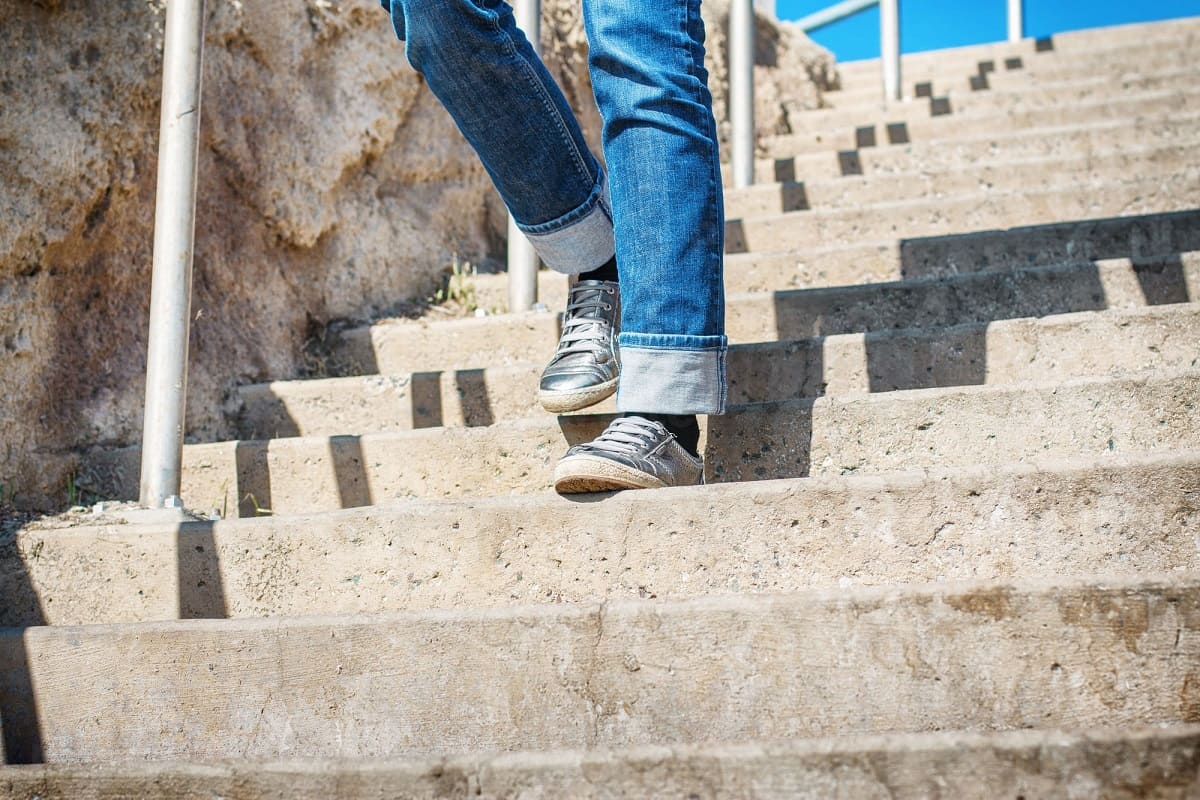

Articles
Why Do My Legs Shake When Walking Down Stairs
Modified: December 7, 2023
Discover the reason behind why your legs shake when walking downstairs with our informative articles. Gain insights on potential causes and remedies.
(Many of the links in this article redirect to a specific reviewed product. Your purchase of these products through affiliate links helps to generate commission for Storables.com, at no extra cost. Learn more)
Introduction
Walking down the stairs is a common activity in our daily lives that most of us take for granted. However, for some individuals, this simple task can be accompanied by an unsettling sensation – leg shaking. Whether it’s a slight tremor or an uncontrollable shake, experiencing leg shaking when walking downstairs can be both concerning and inconvenient.
This article aims to shed light on why legs shake when walking downstairs and explore the factors that may contribute to this phenomenon. Understanding the underlying causes can help individuals better manage and address this issue, improving their overall mobility and quality of life. So, why do our legs shake when navigating those steps?
Before diving into the reasons behind leg shaking, it is essential to understand the basic mechanics of walking and the role our muscles play in this process. Walking is a complex motor activity that involves the coordinated effort of various muscles, tendons, and joints throughout the body. The legs, in particular, are crucial for maintaining balance and providing the necessary support for movement.
When we walk downstairs, the leg muscles work harder than during regular walking on flat ground due to the increased weight and force exerted on them. As a result, the muscles need to contract and relax in a coordinated manner to control movement and prevent falls. However, in some cases, this coordination can be disrupted, leading to leg shaking.
Key Takeaways:
- Understanding the causes of leg shaking when walking downstairs, from muscle fatigue to neurological conditions, empowers individuals to seek appropriate medical evaluation and personalized treatment plans for improved mobility and quality of life.
- Implementing prevention and management strategies, such as conditioning, balance training, and lifestyle adjustments, can minimize leg shaking episodes, while seeking emotional support and collaborating with healthcare professionals ensures comprehensive care and holistic well-being.
Read more: Top Of Foot Pain When Walking Down Stairs
Understanding Leg Shaking
Leg shaking, also known as leg tremors or muscle tremors, refers to an involuntary rhythmic movement of the leg muscles. It can manifest as a slight vibration, a noticeable tremor, or even a more pronounced shaking motion. Leg shaking can be categorized into two types: physiological and pathological.
Physiological tremors are considered normal and typically occur in response to factors such as stress, fatigue, or caffeine intake. These tremors are usually temporary and subside once the contributing factors are addressed. Pathological tremors, on the other hand, are more persistent and can be indicative of an underlying health condition or neurological disorder.
When it comes to leg shaking specifically while walking downstairs, several factors can contribute to this phenomenon.
Muscle Fatigue and Weakness
One common cause of leg shaking when descending stairs is muscle fatigue and weakness. The muscles in our legs may become fatigued due to prolonged or strenuous activity, resulting in a loss of strength and coordination. When descending stairs, the increased workload on the leg muscles can exacerbate this fatigue, leading to shaking or trembling.
Overexertion and Lack of Conditioning
An individual who is not accustomed to regular physical activity may experience leg shaking when walking downstairs. Lack of conditioning and overexertion can put additional strain on the leg muscles, causing them to shake as they struggle to support the body’s weight and maintain balance. Gradually increasing physical activity and incorporating strength-training exercises can help improve muscle endurance and minimize leg shaking.
Neurological Conditions
In some cases, leg shaking when walking downstairs may be a symptom of an underlying neurological condition. Conditions such as Parkinson’s disease, essential tremor, or multiple sclerosis can cause involuntary muscle movements, including leg shaking. If leg shaking is accompanied by other neurological symptoms or persists over a prolonged period, it is important to consult a healthcare professional for further evaluation.
Medications and Side Effects
Certain medications, such as those used to treat certain psychiatric disorders or neurological conditions, can induce leg shaking or tremors as a side effect. If you notice leg shaking after starting a new medication, it is crucial to speak with your healthcare provider to determine if the medication is the underlying cause and discuss potential alternatives.
Other Contributing Factors
In addition to the factors mentioned above, there are other factors that can contribute to leg shaking while walking downstairs. These may include anxiety, stress, dehydration, low blood sugar levels, or even the use of substances like alcohol or drugs. It is important to address these contributing factors and make lifestyle adjustments if necessary to minimize leg shaking.
Understanding the possible causes of leg shaking when walking downstairs is the first step in effectively managing and addressing this issue. In the next section, we will discuss various medical evaluations and treatment options that can help individuals find relief and improve their ability to navigate stairs with confidence.
The Role of Muscles
When it comes to understanding why our legs shake when walking downstairs, it is essential to appreciate the crucial role that our muscles play in this process. Our muscles work together to provide stability, balance, and controlled movement.
The muscles involved in walking downstairs are primarily the quadriceps, hamstrings, calves, and glutes. These muscles work in coordination to support our body weight, absorb impact, and help us maintain balance while descending the stairs.
The quadriceps, located in the front of the thighs, are responsible for extending the knee and straightening the leg. When walking downstairs, these muscles work eccentrically, which means they are lengthening under tension to control the movement of the legs. The hamstrings, located in the back of the thighs, are responsible for flexing the knee and assisting in hip extension. They help stabilize the lower body during stair descent.
The calves, primarily composed of the gastrocnemius and soleus muscles, play a vital role in ankle movement by providing strength and support. The calves help control the lowering of the foot and provide stability as we place our weight on each step. Finally, the glutes, including the gluteus maximus, medius, and minimus, are responsible for hip extension and stability during stair descent.
When all these muscles work together harmoniously, the legs can smoothly navigate stairs without any shaking or instability. However, various factors can disrupt this coordination and lead to leg shaking.
Muscle fatigue and weakness can occur when the muscles are not conditioned or properly trained for the physical demands of walking downstairs. Overexertion and lack of conditioning can strain the muscles, causing them to fatigue more quickly and resulting in shaking or trembling.
In addition, certain neuromuscular conditions can affect the function of the muscles involved in stair descent. Disorders such as amyotrophic lateral sclerosis (ALS), multiple sclerosis (MS), or peripheral neuropathy can lead to muscle weakness, tremors, and coordination issues, including leg shaking. If an underlying neuromuscular condition is present, it is crucial to consult a healthcare professional for a proper diagnosis and appropriate management strategies.
Understanding the role of muscles in the process of walking downstairs can help us appreciate the intricate nature of leg shaking. By recognizing and addressing muscle fatigue, weakness, and any underlying neuromuscular conditions, we can take steps towards minimizing leg shaking and improving our ability to navigate stairs comfortably and confidently.
Causes of Leg Shaking when Walking Downstairs
Leg shaking when walking downstairs can have various causes, ranging from temporary factors to underlying medical conditions. Understanding these causes can help individuals identify the root cause of their leg shaking and determine the best course of action for management and treatment. Here are some common causes:
Muscle Fatigue and Weakness: Prolonged or strenuous activity can cause muscle fatigue and weakness, particularly in the leg muscles. When descending stairs, the increased workload on these fatigued muscles can lead to shaking or trembling.
Overexertion and Lack of Conditioning: Individuals who are not accustomed to regular physical activity or lack conditioning may experience leg shaking when walking downstairs. The lack of conditioning puts additional strain on the leg muscles, leading to shaking as they struggle to support the body’s weight and maintain balance.
Neurological Conditions: Some neurological conditions can cause leg shaking when walking downstairs. Parkinson’s disease, essential tremor, multiple sclerosis, and peripheral neuropathy are examples of conditions that can result in tremors and involuntary muscle movements.
Medications and Side Effects: Certain medications can induce leg shaking or tremors as a side effect. Medications used to treat psychiatric disorders, such as selective serotonin reuptake inhibitors (SSRIs), or neurological conditions, may contribute to leg shaking. If leg shaking coincides with starting a new medication, it is important to consult with a healthcare professional for evaluation and potential adjustments.
Anxiety and Stress: Anxiety and stress can manifest physically, causing muscle tension and trembling. These emotions can exacerbate any existing muscle fatigue or weakness, leading to leg shaking when walking downstairs.
Dehydration and Low Blood Sugar: Dehydration and low blood sugar levels can affect muscle function and lead to leg shaking. It is important to stay hydrated and maintain a balanced diet to support proper muscle performance.
Substance Use: The use of substances, such as alcohol or drugs, can affect muscle control and coordination, leading to leg shaking while walking downstairs. It’s important to avoid or moderate the consumption of substances that may contribute to this issue.
Other Contributing Factors: Other factors that can contribute to leg shaking include low fitness levels, poor balance, improper footwear, and even environmental factors like cold temperatures. Identifying and addressing these contributing factors can help alleviate leg shaking symptoms.
It is important to note that occasional leg shaking when walking downstairs may not necessarily indicate a severe underlying issue. However, if leg shaking is persistent, significantly impacting mobility, or accompanied by other concerning symptoms, it is advisable to seek medical evaluation.
In the next sections, we will explore strategies for managing and preventing leg shaking, as well as discuss when it is recommended to seek professional medical advice.
Muscle Fatigue and Weakness
Muscle fatigue and weakness are common causes of leg shaking when walking downstairs. Fatigue refers to the decline in muscle performance and function after prolonged or strenuous activity, while weakness implies reduced muscle strength and power.
When our muscles become fatigued, they are less able to contract and relax efficiently, leading to a loss of coordination and control. As a result, the muscles may shake or tremble as they struggle to support the body’s weight and maintain balance during stair descent.
Several factors can contribute to muscle fatigue and weakness:
Prolonged or Intense Activity: Engaging in prolonged or intense physical activity without allowing for sufficient rest and recovery can lead to muscle fatigue. When the muscles are continuously exerted without adequate rest periods, they become overworked and more susceptible to shaking or trembling.
Lack of Conditioning or Regular Exercise: Individuals who have a sedentary lifestyle or do not regularly participate in physical activity may experience leg shaking due to muscle weakness. When the leg muscles are not conditioned or trained for the demands of walking downstairs, they may fatigue more quickly and be more prone to shaking.
Imbalanced Muscle Strength: Muscle imbalances, where some muscles are significantly weaker or stronger than others, can contribute to leg shaking. When certain muscles are weaker, they may struggle to support the body’s weight during stair descent, leading to shaking or trembling.
Age and Natural Decline: Muscle fatigue and weakness may also be more common in older individuals due to age-related muscle loss, known as sarcopenia. As we age, our bodies may experience a natural decline in muscle mass and strength, making us more susceptible to leg shaking during physical activity such as walking downstairs.
Addressing muscle fatigue and weakness can help alleviate leg shaking symptoms when walking downstairs. Here are some strategies that can be effective:
Rest and Recovery: Ensuring proper rest and recovery periods between physical activities can help prevent excessive muscle fatigue. It is important to listen to your body and allow sufficient time for muscles to recover before engaging in intense activity again.
Gradual Muscle Conditioning: Gradually building up muscle strength and endurance through regular exercise can improve muscle resilience. Including exercises that target the leg muscles, such as squats, lunges, and calf raises, can help condition and strengthen the muscles involved in stair descent.
Balanced Strength Training: Paying attention to muscle imbalances and incorporating exercises that target all muscle groups can help improve overall muscle strength and balance. Working with a fitness professional or physical therapist can ensure a well-rounded strength training program that addresses any specific weaknesses or imbalances.
Proper Nutrition and Hydration: Adequate nutrition and hydration are essential for optimal muscle function. Consuming a balanced diet rich in nutrients and staying properly hydrated can support muscle health and minimize the risk of muscle fatigue and weakness.
Listen to Your Body: It is important to pay attention to your body’s signals and not push through excessive fatigue or discomfort. Rest when needed, pace yourself during physical activity, and modify intensity or duration as necessary.
By addressing muscle fatigue and weakness through appropriate rest, conditioning, and lifestyle adjustments, individuals can minimize leg shaking when walking downstairs and improve their overall muscle function and control.
Read more: Dizzy When Walking Up Stairs
Overexertion and Lack of Conditioning
Leg shaking when walking downstairs can occur when the body is subjected to overexertion or lacks adequate conditioning. Overexertion refers to pushing the body beyond its limits, while lack of conditioning means that the muscles are not sufficiently trained or prepared for the physical demands of stair descent.
Here are a few factors that contribute to leg shaking due to overexertion and lack of conditioning:
Lack of Regular Physical Activity: A sedentary lifestyle and lack of regular exercise can result in weakened leg muscles and reduced endurance. When the leg muscles are not conditioned, they can quickly become fatigued during activities such as walking downstairs, leading to leg shaking.
Sudden Increase in Physical Activity: Engaging in sudden or intense physical activity without gradually building up stamina and strength can put excessive strain on the muscles. This sudden increase in activity can overwhelm the leg muscles, causing them to shake due to fatigue or inadequate conditioning.
Poor Core Stability and Balance: Core stability and balance play a vital role in maintaining proper form and control during movements like stair descent. If the core muscles are weak or the individual has poor balance, the legs may shake as they struggle to maintain stability and support the body’s weight.
Excessive Weight or Obesity: Carrying excess weight can increase the strain on the leg muscles when walking downstairs. The extra load on the muscles can lead to faster fatigue and leg shaking, especially if the muscles are not conditioned to handle the additional weight.
To prevent leg shaking due to overexertion and lack of conditioning, it is important to take the following steps:
Gradual Progression: When starting a new exercise routine or increasing the intensity of physical activity, it is crucial to progress gradually. This allows the muscles to adapt and strengthen over time, reducing the risk of leg shaking due to overexertion.
Cardiovascular Conditioning: Incorporating cardiovascular exercises, such as walking, jogging, or cycling, into a regular routine can improve overall endurance and stamina. This helps condition the leg muscles and reduces the likelihood of leg shaking during activities like stair descent.
Strength Training: Implementing regular strength training exercises can improve muscle strength and stability. Focusing on exercises that target the leg muscles, such as squats, lunges, and step-ups, can help build strength specifically for stair descent.
Core Stability and Balance Training: Incorporating exercises that enhance core stability and balance, such as plank variations, yoga, or Pilates, can improve overall posture and control during stair descent. This can help reduce leg shaking by providing better support and control for the leg muscles.
Weight Management: Maintaining a healthy weight or working towards weight loss can help lessen the strain on the leg muscles while walking downstairs. This reduces the risk of leg shaking due to the excessive load on the muscles.
By gradually increasing physical activity, improving conditioning, and addressing core stability and balance, individuals can minimize leg shaking when walking downstairs. It is important to work at a comfortable pace, listen to the body’s limits, and seek guidance from a healthcare professional or fitness expert if needed.
To prevent your legs from shaking when walking down stairs, focus on engaging your core muscles and maintaining a steady pace. Strengthening your leg muscles through exercises like squats and lunges can also help improve stability.
Neurological Conditions
Leg shaking when walking downstairs can be associated with various neurological conditions that affect the central nervous system. These conditions can disrupt the normal functioning of the muscles and coordination, resulting in involuntary movements and tremors. Here are some neurological conditions that may contribute to leg shaking:
Parkinson’s Disease: Parkinson’s disease is a progressive neurological disorder characterized by the degeneration of dopamine-producing cells in the brain. Tremors, including leg shaking, are one of the hallmark symptoms of Parkinson’s disease. These tremors typically occur at rest and can worsen with movement and stress.
Essential Tremor: Essential tremor is a neurological disorder characterized by involuntary rhythmic shaking of the limbs, including the legs. The tremors associated with essential tremor can be exacerbated during specific tasks, such as walking downstairs, and tend to worsen with stress or anxiety.
Multiple Sclerosis (MS): Multiple sclerosis is an autoimmune disease that affects the central nervous system, leading to the destruction of the protective covering (myelin) of nerve fibers. MS can cause a wide range of symptoms, including muscle weakness, spasticity, and tremors. Leg shaking when walking downstairs may be a consequence of these neurological disturbances.
Peripheral Neuropathy: Peripheral neuropathy refers to damage or dysfunction of the peripheral nerves outside the brain and spinal cord. This condition can cause various symptoms, including muscle weakness, numbness, and involuntary muscle movements. Leg shaking may occur as a result of the disrupted nerve signals in the legs.
Cerebellar Disorders: The cerebellum is the part of the brain responsible for coordinating movement and balance. Disorders affecting the cerebellum, such as cerebellar ataxia, can cause unsteady gait and involuntary movements, leading to leg shaking when walking downstairs.
If leg shaking is accompanied by other neurological symptoms or persists over a prolonged period, it is important to seek medical evaluation for a proper diagnosis and appropriate management strategies. Neurologists or movement disorder specialists can conduct a comprehensive assessment, which may include neurological examinations, imaging tests, and other diagnostic procedures, to identify the underlying cause of the leg shaking.
Treatment for leg shaking associated with neurological conditions often aims to manage the symptoms and slow the progression of the underlying condition. This may include the use of medications to help control tremors, physical therapy to improve muscle strength and coordination, and lifestyle modifications to minimize triggers and optimize overall well-being.
It is essential to work closely with healthcare professionals for ongoing management and treatment of any underlying neurological conditions contributing to leg shaking. Proper medical guidance and support can help individuals effectively manage their symptoms and maintain a good quality of life.
Medications and Side Effects
Leg shaking when walking downstairs can be caused or exacerbated by certain medications and their side effects. Medications prescribed to manage various medical conditions can sometimes disturb the normal functioning of the muscles and nerves, resulting in involuntary movements, including leg shaking. Here are a few examples:
Antipsychotic Medications: Antipsychotic medications, such as haloperidol or risperidone, can have side effects that include movement disorders, such as tremors or dystonia (involuntary muscle contractions). These medication-induced movement disorders can contribute to leg shaking while walking downstairs.
Anticonvulsant Medications: Some anticonvulsant medications used to control seizures, such as phenytoin or valproic acid, can cause tremors or movement abnormalities as a side effect. These medication-induced tremors can manifest as leg shaking when descending stairs.
Antidepressant Medications: Selective serotonin reuptake inhibitors (SSRIs) and other antidepressant medications can cause tremors or restlessness as a side effect. These medication-induced tremors can lead to leg shaking or trembling during physical activities like walking downstairs.
Antihypertensive Medications: Certain medications used to treat high blood pressure, such as beta-blockers, can cause muscle weakness, imbalance, or tremors. These side effects can contribute to leg shaking while navigating stairs.
Stimulant Medications: Stimulant medications, often used to treat conditions like attention deficit hyperactivity disorder (ADHD), can increase muscle tension and lead to tremors or jitteriness as side effects. These medication-induced tremors can result in leg shaking during activities like walking downstairs.
If you notice leg shaking after starting a new medication, it is crucial to discuss these symptoms with your healthcare provider. They can evaluate whether the leg shaking is a direct result of the medication and explore potential alternatives or adjustments to the dosage.
It is important to note that not everyone will experience leg shaking as a side effect of medications, and the occurrence and severity of side effects vary among individuals. In some cases, the benefits of the medication may outweigh the potential side effects. Healthcare providers carefully weigh the risks and benefits when prescribing medications and make adjustments as needed based on an individual’s specific circumstances.
Always consult with your healthcare provider before making any changes to medication regimens or dosages. They can provide guidance and monitor your symptoms to ensure the best possible treatment outcomes.
Other Contributing Factors
Leg shaking when walking downstairs can also be influenced by various other contributing factors. These factors may not directly cause leg shaking, but they can exacerbate existing conditions or increase the likelihood of experiencing shaking episodes. Here are some common contributing factors:
Anxiety and Stress: Anxiety and stress can manifest physically, leading to muscle tension and trembling. When individuals experience heightened levels of anxiety or stress, these emotions can amplify any existing muscle fatigue or weakness, increasing the likelihood of leg shaking during physical activities like walking downstairs.
Dehydration and Low Blood Sugar: Dehydration and low blood sugar levels can impact muscle function and lead to leg shaking. Proper hydration and maintaining stable blood sugar levels are important for optimal muscle performance. Ensuring adequate fluid intake and consuming regular, balanced meals can help minimize the risk of experiencing leg shaking due to these factors.
Improper Footwear: Wearing footwear that does not provide sufficient support or stability can contribute to leg shaking. Shoes that are ill-fitting, lack proper arch support, or have worn-out soles can affect your balance and increase the strain on the leg muscles. Investing in well-fitting, supportive footwear can help alleviate leg shaking caused by poor foot mechanics.
Temperature and Environmental Conditions: Extreme cold weather conditions can cause muscle stiffness and affect motor control, leading to leg shaking when walking downstairs. Additionally, factors like uneven or slippery surfaces, poor lighting, or other environmental hazards can increase the risk of balance issues and leg shaking. Being mindful of the environment and taking necessary precautions can minimize these contributing factors.
Substance Use: The use of substances like alcohol or drugs can affect muscle control and coordination, leading to leg shaking while walking downstairs. These substances can impair motor skills and balance, making it difficult to navigate stairs smoothly. Avoiding or moderating the consumption of substances that contribute to leg shaking is advisable.
Other Medical Conditions: Certain medical conditions, such as diabetes, peripheral artery disease, or thyroid disorders, can affect the muscles and nerves, increasing the likelihood of leg shaking. It is important to address and manage any underlying medical conditions to minimize leg shaking symptoms.
By identifying and addressing these contributing factors, individuals can take steps to minimize leg shaking when walking downstairs. Managing anxiety and stress through relaxation techniques, maintaining proper hydration and blood sugar levels, wearing supportive footwear, being mindful of environmental conditions, and making lifestyle adjustments all play a role in reducing the risk of leg shaking episodes.
If leg shaking persists or is accompanied by other concerning symptoms, it is advisable to seek medical evaluation to rule out any underlying conditions that may require specific treatment or management strategies.
Read more: Leg Pain When Going Up Stairs
Medical Evaluation and Treatment
When experiencing leg shaking when walking downstairs, it is important to undergo a medical evaluation to determine the underlying cause and appropriate treatment options. By seeking professional medical advice, individuals can receive a comprehensive assessment and a tailored management plan. Here is an overview of the process:
Medical Evaluation: A healthcare professional, such as a primary care physician or a specialist like a neurologist or orthopedist, will conduct a thorough evaluation. This may include a review of medical history, a physical examination, and possibly additional diagnostic tests to rule out underlying medical conditions or identify contributing factors.
Diagnostic Tests: Diagnostic tests may be recommended to help determine the cause of leg shaking. These tests may include imaging studies, such as X-rays or MRI scans, nerve conduction studies, blood tests, or electromyography (EMG) to assess nerve and muscle function.
Collaborative Approach: In some cases, multiple healthcare professionals may collaborate to evaluate and treat leg shaking. For example, if a neurological condition is suspected, a neurologist may work alongside a physical therapist to develop a comprehensive treatment plan that addresses both the underlying condition and any functional limitations.
Treatment Options: The most appropriate treatment options for leg shaking depend on the underlying cause. Treatment approaches may include:
- Medication: In cases where leg shaking is due to neurological conditions or medication side effects, medications may be prescribed to help control tremors or manage the underlying condition.
- Physical Therapy: Physical therapy can help improve muscle strength, coordination, and balance. Therapeutic exercises and techniques can be tailored to address specific muscle imbalances or weakness that contribute to leg shaking.
- Occupational Therapy: Occupational therapy may focus on improving functional abilities and finding techniques or strategies to minimize leg shaking during daily activities.
- Lifestyle Modifications: Making lifestyle adjustments, such as maintaining a balanced diet, staying hydrated, managing stress levels, and optimizing sleep, can positively impact leg shaking symptoms.
- Assistive Devices: In some cases, assistive devices, such as canes or walkers, may be recommended to provide additional support during stair descent and minimize leg shaking.
It is essential to follow the recommended treatment plan and attend any scheduled follow-up appointments. Regular communication with healthcare professionals is crucial to assess the effectiveness of treatments and make any necessary adjustments.
Additionally, individuals may benefit from seeking support from support groups, counseling, or other forms of emotional and mental well-being support. The emotional impact of leg shaking should not be underestimated, and psychological support can be an essential aspect of overall management and well-being.
Remember, each individual’s situation is unique, and treatment plans will vary. It is important to consult healthcare professionals to receive personalized advice and guidance based on the specific underlying cause and individual needs.
Prevention and Management Strategies
Prevention and management strategies for leg shaking when walking downstairs focus on addressing underlying causes, improving muscle strength and coordination, and making lifestyle adjustments. By implementing these strategies, individuals can minimize the frequency and severity of leg shaking episodes. Here are some key approaches:
Conditioning and Strengthening: Gradually building up muscle strength and endurance through regular exercise can improve muscle resilience. Targeting the leg muscles with exercises like squats, lunges, and calf raises can enhance their ability to support the body during stair descent and reduce leg shaking.
Balance and Stability Training: Incorporating balance and stability exercises into a fitness routine can improve overall stability and reduce leg shaking when navigating stairs. Exercises like single-leg stance or heel-to-toe walk can enhance proprioception and postural control.
Flexibility and Range of Motion Exercises: Maintaining good flexibility and range of motion in the leg muscles can contribute to better control and coordination, reducing the risk of leg shaking. Stretching exercises targeting the quadriceps, hamstrings, and calves can help improve flexibility in these muscles.
Proper Footwear: Wearing supportive and well-fitting shoes is essential for maintaining stability and minimizing leg shaking. Look for shoes with good arch support, cushioning, and a proper fit to provide the necessary support during stair descent.
Healthy Lifestyle: Adopting a healthy lifestyle can play a significant role in preventing leg shaking. This includes maintaining a balanced diet, staying properly hydrated, managing stress levels, and getting enough quality sleep. These lifestyle factors contribute to overall muscle health and reduce the likelihood of leg shaking episodes.
Lift Techniques: When lifting heavy objects, it is important to use proper lifting techniques to minimize strain on the leg muscles. Lift with the legs, not the back, and avoid sudden jerking movements that can trigger leg shaking.
Environmental Modifications: Making modifications to the environment can help minimize the risk of leg shaking while walking downstairs. This may involve ensuring adequate lighting, removing potential obstacles or hazards, and providing handrails for additional support and stability.
Stress Management: Finding effective ways to manage stress can help reduce leg shaking episodes triggered by anxiety or stress. Techniques such as deep breathing exercises, meditation, yoga, or engaging in activities that promote relaxation can be beneficial.
Medical Follow-up: Regular medical follow-ups are essential, especially for individuals with underlying medical conditions contributing to leg shaking. It is important to work closely with healthcare professionals, attend scheduled appointments, and follow recommended treatment plans for optimal management and symptom control.
Support and Coping Strategies: Seeking support from healthcare professionals, support groups, or counseling can be valuable in managing the emotional impact of leg shaking. Sharing experiences and receiving guidance from others facing similar challenges can provide comfort and practical advice.
It is important to personalize these strategies to suit individual needs and circumstances. Working with healthcare professionals, such as physical therapists, occupational therapists, or physicians, can help develop an individualized plan that addresses specific concerns and goals. Remember that consistency, patience, and open communication with healthcare providers are key to successfully implementing and maintaining these strategies.
Conclusion
Leg shaking when walking downstairs can be a perplexing and sometimes distressing experience. While it may have various causes, understanding the underlying factors can help individuals manage and address the issue more effectively.
From muscle fatigue and weakness to neurological conditions, medications, and other contributing factors, leg shaking can have a range of roots. It is crucial to undergo a medical evaluation to determine the specific cause and explore appropriate treatment options.
Prevention and management strategies play an essential role in minimizing leg shaking episodes. By focusing on conditioning and strengthening the leg muscles, improving balance and stability through specific exercises, and making lifestyle adjustments, individuals can alleviate leg shaking symptoms and improve overall functionality.
Collaboration with healthcare professionals is vital throughout the journey. They can provide guidance, evaluate underlying medical conditions, prescribe appropriate treatments, and monitor progress. Engaging in physical therapy, receiving medication management, and exploring alternative therapies may all be part of a comprehensive treatment plan.
Additionally, emotional support is crucial for individuals experiencing leg shaking. The impact of this condition can extend beyond the physical realm, impacting emotional well-being. Support groups, counseling, and other forms of support can provide individuals with the tools to cope with the challenges that leg shaking may bring.
Remember, each person’s experience with leg shaking is unique, and there is no one-size-fits-all solution. It may take time to find the most effective treatment approach and management strategies. However, with patience, perseverance, and guidance from healthcare professionals, individuals can minimize leg shaking, regain confidence, and improve their quality of life.
Frequently Asked Questions about Why Do My Legs Shake When Walking Down Stairs
Was this page helpful?
At Storables.com, we guarantee accurate and reliable information. Our content, validated by Expert Board Contributors, is crafted following stringent Editorial Policies. We're committed to providing you with well-researched, expert-backed insights for all your informational needs.


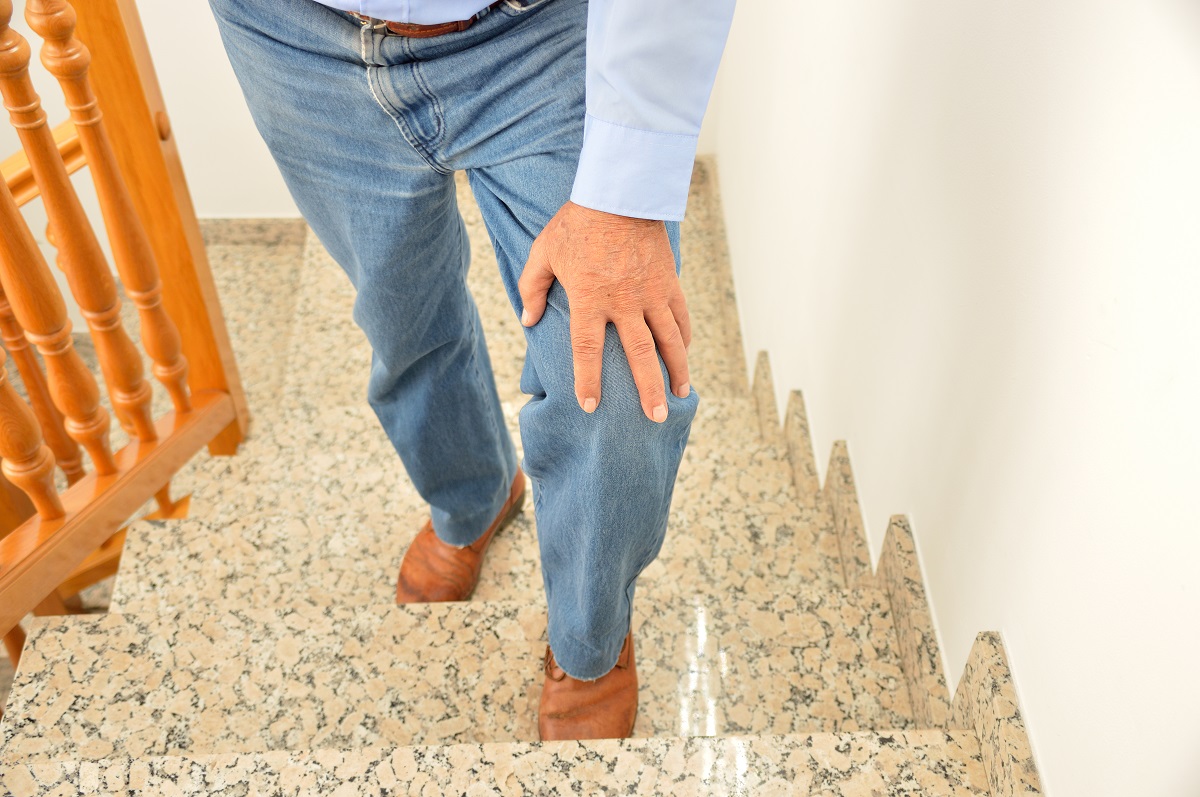

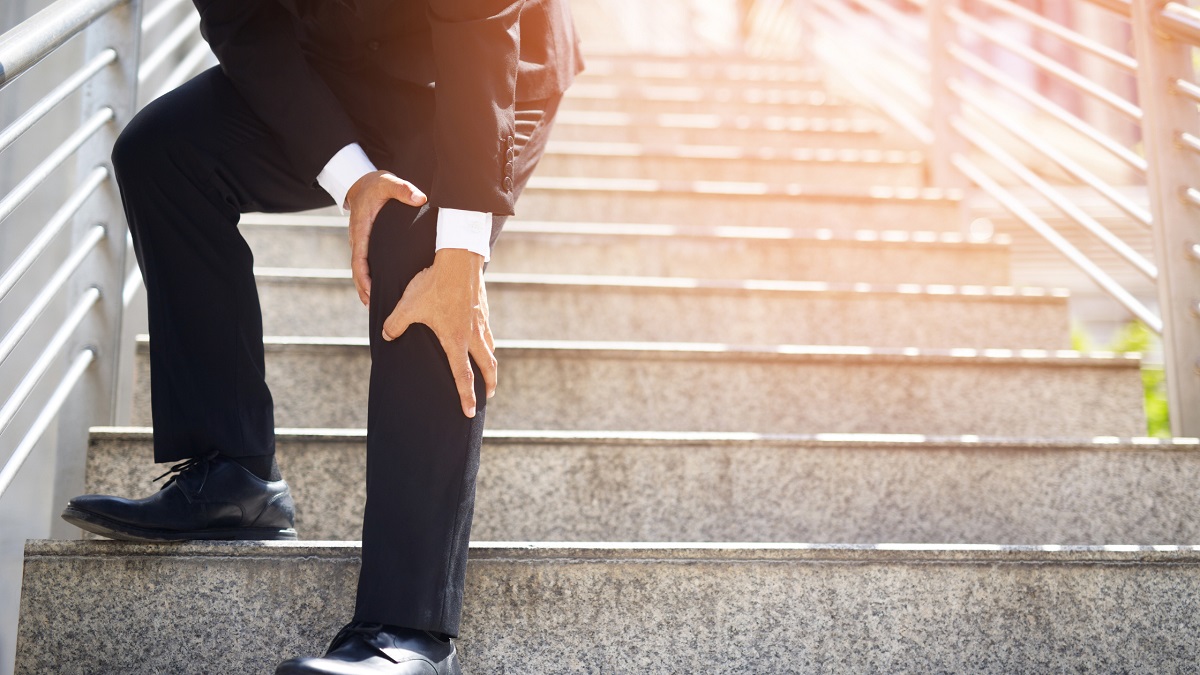

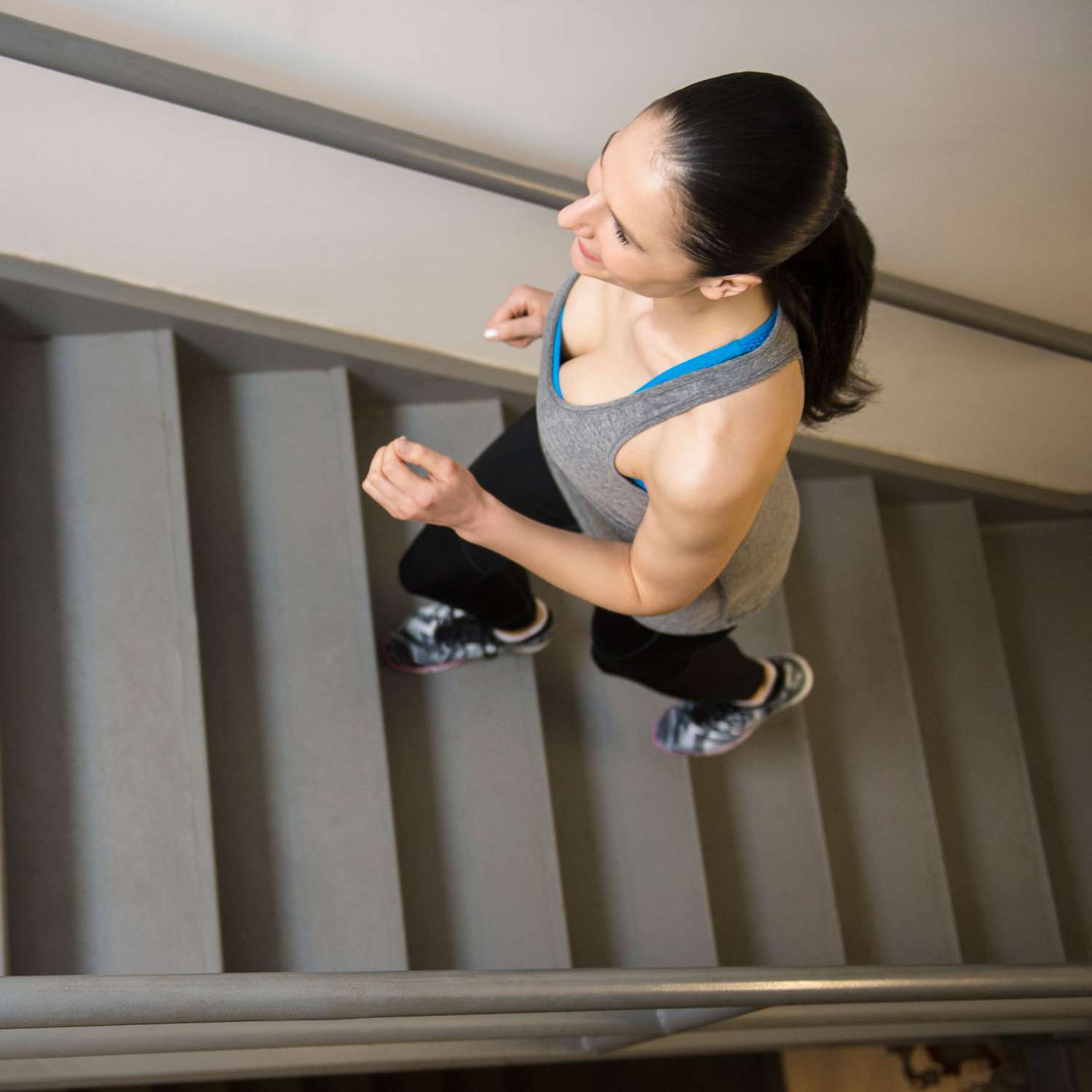


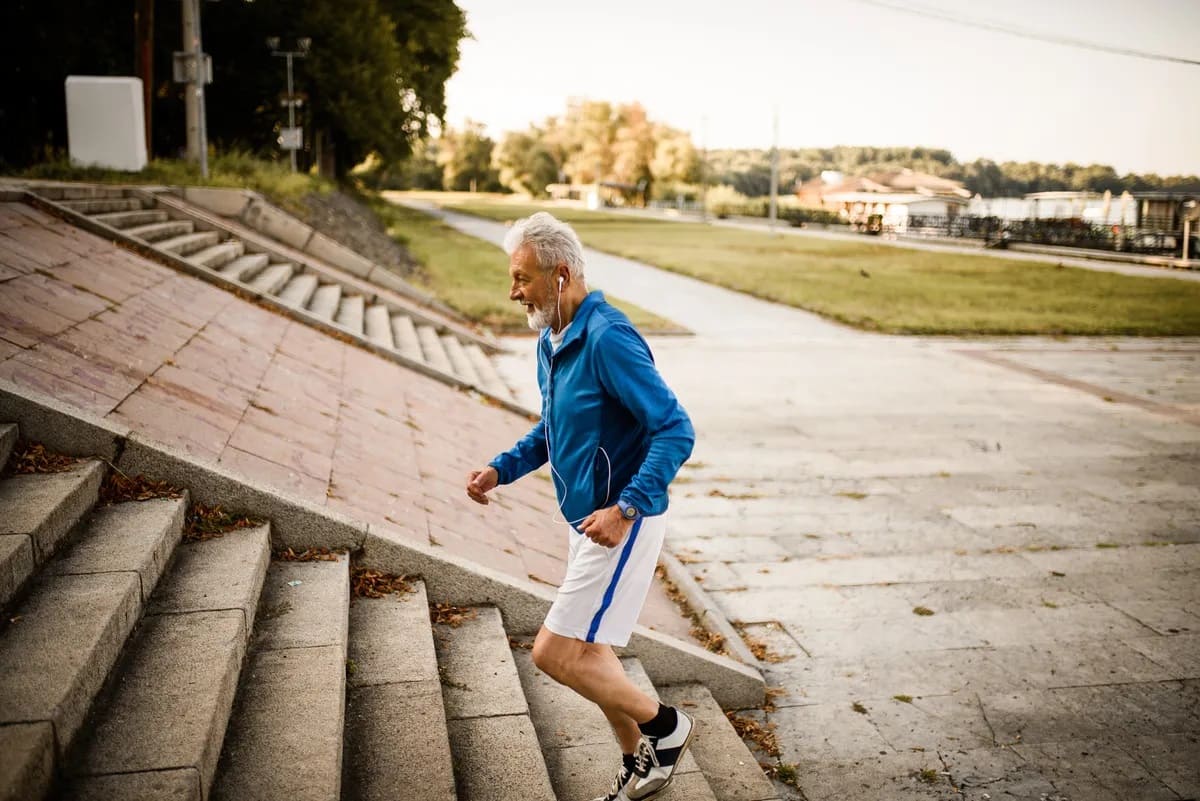
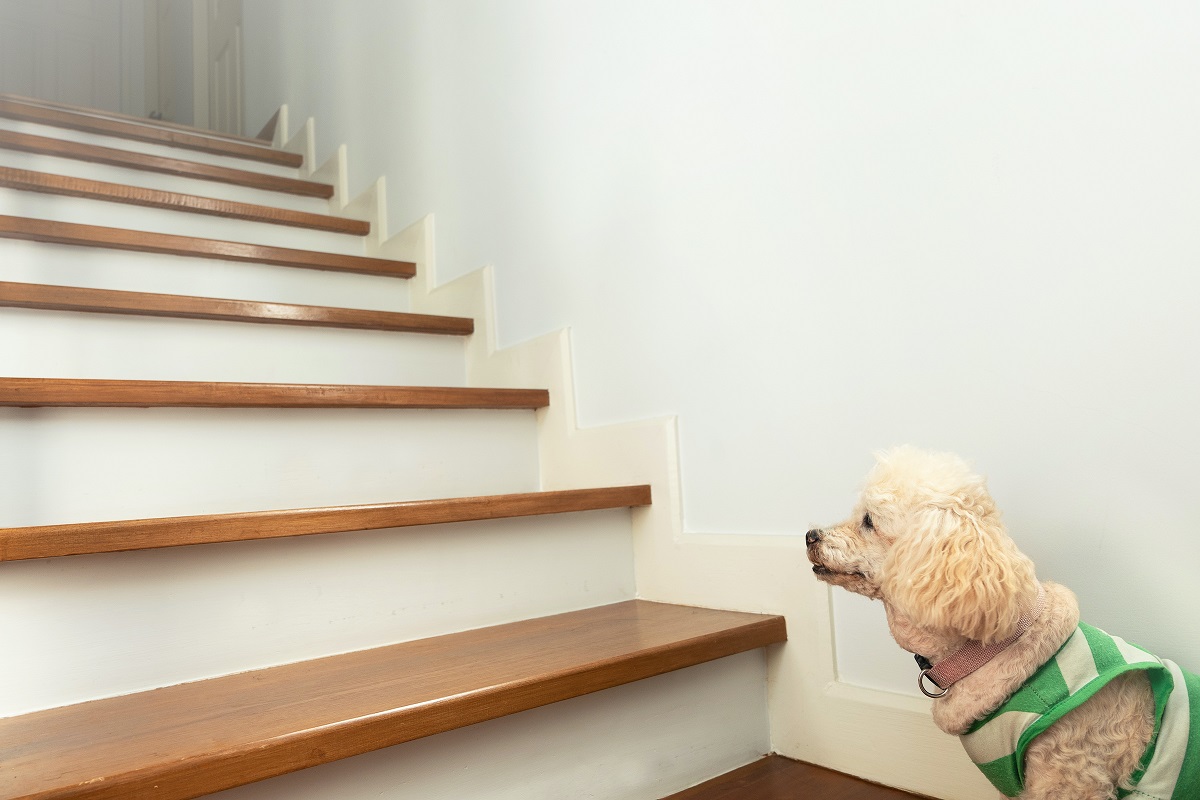

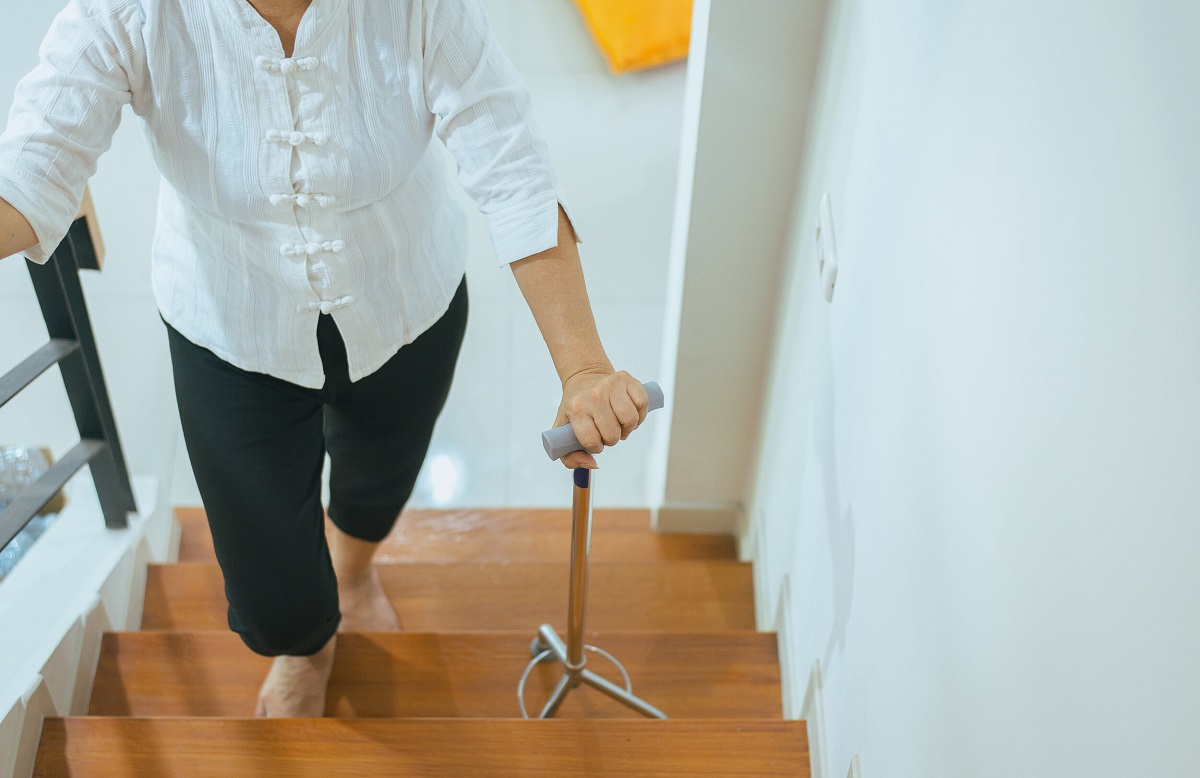

0 thoughts on “Why Do My Legs Shake When Walking Down Stairs”